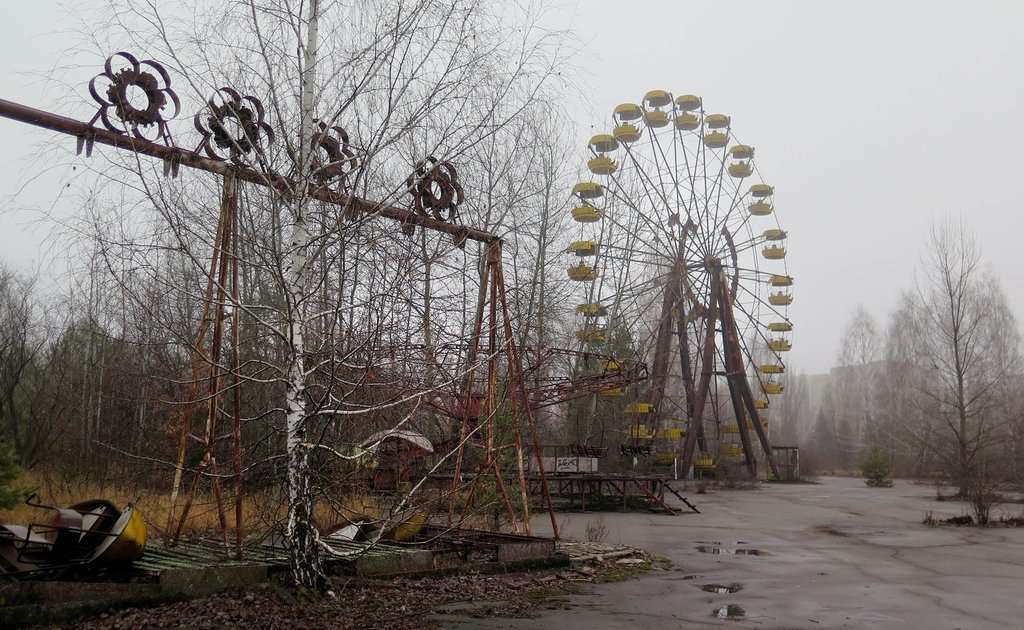Chernobyl nuclear power station is located around 80 miles (130km) north of Kiev, Ukraine, and around 12 miles (12km) south of the Belarusian border. Construction on the Chernobyl nuclear power plant began in 1970.
The station itself consisted of four reactors which, combined, produced around 10 percent of Ukraine's electricity at the time of the accident. The reactors were of the RMBK-1000 design, a type of graphite-moderated reactor made by the-then Soviet Union.
Following the disaster in 1986, around 350,000 "liquidators" – made up of the army, plant staff, fire services and more – were initially involved in the clean-up operation after the accident, according to the World Health Organisation; around 240,000 of these workers received the highest radiation doses. The WHO further states that the number of registered liquidators later rose to 600,000.
The accident occurred during a test on the fourth reactor, which was conducted in order to find out whether the turbines could produce enough energy to keep the coolant pumps running if power was lost.
The accident released approximately 400 times more radioactive fallout than that of the atomic bomb dropped on Hiroshima; Japan, in 1945, according to the International Atomic Energy Agency (IAEA).
Radioactive isotopes, such as caesium-137, iodine-131 and strontium-90, were released into the air. Belarus received 70% of the fallout from Chernobyl, which contaminated one fifth of the country's land used for agriculture.
The evacuation of the town of Pripyat began on 27 April, by which time residents had already begun to complain of sickness and feeling unwell. No reports or details regarding the accident were released until the third day after the reactor exploded.

Odemption on August 18th, 2017 at 18:09 UTC »
Funnily enough, reactors 1-3 continued to operate after the disaster.
Reactor 2 caught fire in 1991 and was shut down for good.
Reactor 1 was shut down in 1996 due to pressure from international goverments.
Reactor 3 however operated for a whopping 14 years until it was finally shut down in the year 2000.
Richa652 on August 18th, 2017 at 14:14 UTC »
Fun story.
I developed Thyroid cancer while I was living in Kyrgyzstan with the peace corps. I found out there were a lot of instances of Thyroid cancer worldwide, but especially in central asia.
Apparently the scar I now rock (from the center of my neck all the way up the right side) is actually colloquially called the "Chernobyl Necklace" due to the fallout blowing that direction over time.
Kinda makes it a little more badass if it weren't such a shitty situation.
Edit -
Thanks for all the well wishes! Health wise I'm fine for now. This'll be my 5th cancerversary in October.
As far as all the "good person", selfless, and saint stuff... yea I did some good in peace corps and I joined to try and make a difference but I was also pretty degenerate over there haha.
TooShiftyForYou on August 18th, 2017 at 14:07 UTC »
The initial evidence that a major release of radioactive material was affecting other countries came not from Soviet sources, but from Sweden. On the morning of 28 April workers at the Forsmark Nuclear Power Plant (approximately 1,100 km (680 mi) from the Chernobyl site) were found to have radioactive particles on their clothes.
It was Sweden's search for the source of radioactivity, after they had determined there was no leak at the Swedish plant, that at noon on 28 April led to the first hint of a serious nuclear problem in the western Soviet Union. Hence the evacuation of Pripyat on 27 April, 36 hours after the initial explosions, was silently completed before the disaster became known outside the Soviet Union.